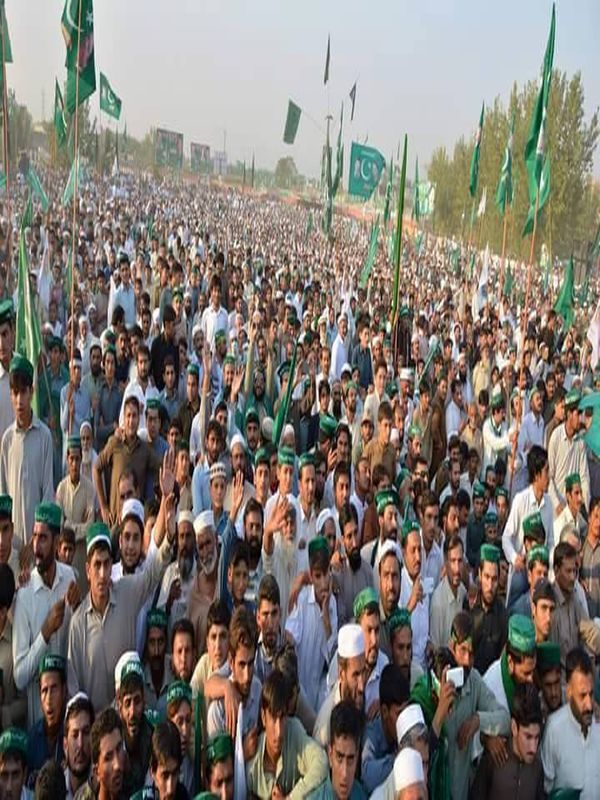
Pakistan Institute of Development Economics
- Home
Our Portals
MenuMenuMenuMenuMenuMenuMenu - ResearchMenuMenuMenuMenuMenuMenuMenu
- Discourse
- The PDR
- Our Researchers
- Academics
- Degree Verification
- Thesis Portal
- Our Portals
Economics of Political Strikes
The ongoing political strikes and marches organized by opposition parties and interest groups against the government have started a fresh wave of demonstrations and rallies. The government, in response, also started public demonstrations to regain public support.
Over the last few years, political protests and marches have become a regular feature of Pakistan’s political landscape. We consider the right to protest a sign of healthy democracy – allowing people to raise their voices to get their rights. However, we also associate these protests with the closure of economic activities. They often result in violence and loss of private and public goods.
It is crucial to assess the economic consequences of these protests, marches, and sit-downs. What are the economic costs of such protests? A strand of literature establishes a negative impact of political instability on growth (Matta et al., 2021). Shonchoy and Tsubota (2016) show that the manufacturing sector’s cost rises by about 1.17% because of the disruption caused by strikes in Bangladesh. Shrestha and Chaudhary (2014) documented that the average direct cost of general strikes was 1.4% of Nepal’s GDP. These strikes reduced GDP growth rates from 0.6% to 2.2%. Rahman (2014) shows that a ten-day strike led to, on average, a 3% loss to GDP per year in Bangladesh.
Matta et al. (2022) show that actual GDP per capita is, on average, 4.3% lower than its counterfactual because of political instability coupled with mass civil protest in the event year. Pakistan faces a loss of 2.7% in GDP per capita because of political instability and mass civil protest. This study further shows that actual GDP per capita did not fully recover its initial output loss.
Ahsan and Iqbal (2015) reveal that a political strike over seven days reduces a firm’s exports by 4.5% in Bangladesh. Protests and strikes substantially affect smaller exports and exporters, producing lower-priced generic products. Piotr et al. (2020) show that a general strike is detrimental to the value of equities and led to a 6.11% decline in dollar-denominated stock market indices of affected countries. A statistically significant increase in risk also accompanies this event. These statistics imply that general strikes have severe ramifications for stock market investors. These losses are equivalent to around 0.4% of GDP per day of a strike.
Considering global evidence, especially from neighboring countries like Nepal, Bangladesh, and India, we can assume that political strikes and protests cost up to 3% of GDP per year. This direct economic loss is three times greater than the total expenditure on social protection (only 1 percent of GDP). The economic loss highlights the consequences for the poor. Pakistan can easily ease poverty and hunger if we invest the same amount (loss in protests) in the poor.
Pakistan is a country with brilliant prospects in terms of development. But today, it is one of the slowest growing countries, even in the South Asia region. The World Economic Outlook (2022) by International Monetary Fund (IMF) shows that the projected GDP growth in Pakistan is 4% compared to India (9%), Bangladesh (6.5%), Maldives (13.2%), and Nepal (4.4%) in 2022.

Pakistan is in the 5th percentile for political stability compared to the South Asian percentile rank of 30th, where 0 is the least desirable and 100 the most desirable rank, according to data from the World Governance Indicator by the World Bank 2022. While Bhutan ranked at the 85th percentile, India ranked at the 17th percentile, Sri Lanka ranked at the 45th percentile, and Bangladesh ranked at the 16th percentile on the political stability index.
If we can restore political stability, the economic potentials ranging from human capital to natural resources can quickly change the country’s economic outlook. In contrast, continuous strikes, protests, and sit-downs would further worsen the economy.
Pakistan faces chronic problems such as low economic growth with a high triple deficit, poverty, hunger, low-quality human capital, terrorism, and a weak governance structure. Unwanted strikes and similar events have wasted politicians’ and other experts’ valuable time, including the media. Political parties, therefore, should ponder the costs of protests and strikes before initiating these activities.
We can spend the same time discussing the real socioeconomic challenges to improve the country’s economic prosperity. Political parties must invest time and energy to find alternatives to strikes to lead the country towards prosperity and growth. The government and relevant authorities should also revisit their approach to dealing with political parties’ strikes. The revised political process requires developing a culture to deal with a problem quickly and honestly.
Economic development depends not only on economic factors but also on non-economic aspects like institutions, political systems, and values. The political system plays a fundamental role in setting the pace and direction of economic development.
A responsible political system commits to creating a favorable environment. It facilitates investments to stimulate economic activities—hence, economic growth. In such a situation, citizens have less incentive to take part in political activities since they engage in economic activities taken in the developed world. People involved in economic activities dislike such political movements and consider them unnecessary evils. The public wants political parties to work on creating alternative and peaceful action-oriented programs.



